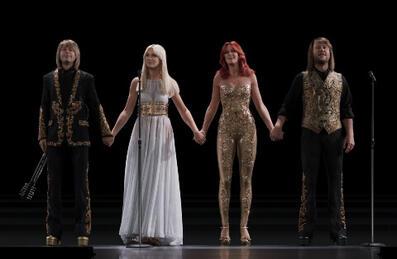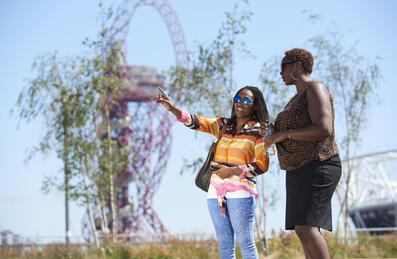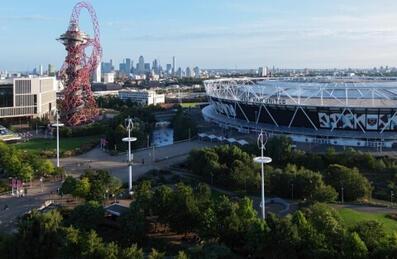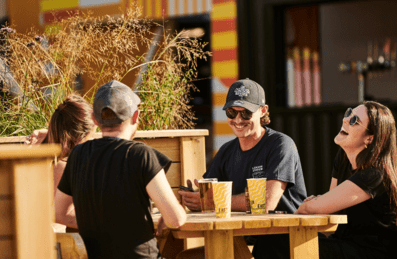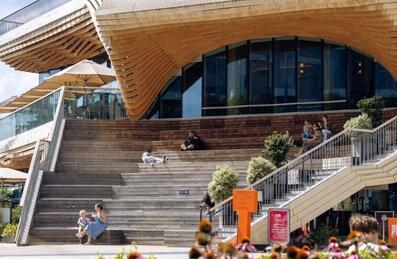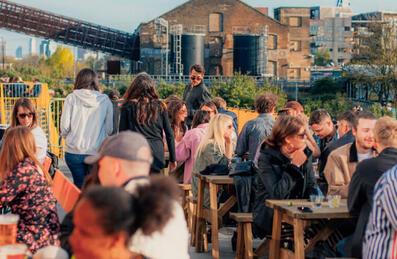
Popular Searches:
Keep up to date
Sign up today for exclusive offers and incredible experiences you won’t want to miss at Queen Elizabeth Olympic Park.
Sign up nowTHE LEA RIVER PARK EAST LONDON'S HIDDEN GEM CELEBRATED
THE LEA RIVER PARK EAST LONDON'S HIDDEN GEM CELEBRATED
Press Release 05/04/2017
The Lea River Park stretches from Queen Elizabeth Olympic Park to the Royal Docks • The route opens up a hidden part of east London with a fascinating history. A new exhibition celebrating the history and future of the Lea River Park opens at the NLA.
A new exhibition opens
A new exhibition opens today (5 April) at New London Architecture (NLA) charting the history and future of the Lea River Park.
The redevelopment of the Lea River Park opens up 45 acres of new space creating walkways and cycle paths stretching from Queen Elizabeth Olympic Park to the historic Royal Docks. It takes a couple of hours to walk the entire Lea River Park with the opportunity to stop off and learn about its rich history:
- Indian Pale Ale was first brewed on the banks of the Lea at the Bow Brewery.
- Three Mills is the world’s biggest tidal mill which was listed in the Domesday Book and is now a film studio home of Master Chef.
- Bow Ecology Park is a thriving wildlife sanctuary with newts, water scorpions and flocks of wading birds.
- Trinity Buoy Wharf is home to London’s only lighthouse.
To accompany the redevelopment of the Lea River Park, teenagers from Lower Lea Valley, working with arts organisation Create, have created a series of ‘Odd Guides,’ exploring the important contribution the River Lea has made to the lives of Londoners, past and present. The guides will be available to pick up at points along the Park.
The Lea River Park completes the vision of Sir Patrick Abercrombie’s Greater London Plan in 1944 to create a Park stretching along the River Lea from Hertfordshire to the Thames which is now the Lee Valley Regional Park.
The Lea River Park is being delivered by the London Legacy Development Corporation, LB Newham and Tower Hamlets, in Partnership with TfL, the GLA and the Lea Valley Regional Park Authority. It was designed by architects 5th Studio.
Dr Paul Brickell, London Legacy Development Corporation, said: “The Thames may be known as the ‘lifeblood of London,’ but much less is known about the Lea and its rich history. Over the years much of the land along the river has been inaccessible, and I’m delighted that more people will be able to explore this hidden and often-forgotten but fascinating part of east London. There are some fascinating areas to explore along the route, so pick up an Odd Guide, and start exploring!”
Sir Robin Wales, Mayor of Newham, said: “The Leaway will provide a continuous walking and cycling route along the river Lea, linking Stratford and the Olympic Park to the Royal Docks and the Thames. The route will improve connections within the borough and across the river into Tower Hamlets and towards the City. With the scale of regeneration taking place across the borough, Newham is one of the most exciting places to live, work and stay in the UK. Our priority for any regeneration in Newham has always been that it benefits our residents – whether this is through job creation, more homes, better transport links or the creation of community spaces. I hope Newham residents enjoy everything the Leaway has to offer.”
John Biggs, Mayor of Tower Hamlets, said: “We have ambitious, high quality housing plans in Poplar that will benefit from our development of the River Lea, and a series of works planned over the coming years will introduce new educational facilities, leisure and green spaces to our communities. The river itself flows through areas of Tower Hamlets that showcase the economic history of the east end – places such as Trinity Buoy Wharf and East India Dock Basin. The wildlife and area around the river also make it a perfect destination for leisure and tourism. I look forward to sharing further improvements to the area as development continues.”
Shaun Dawson, Chief Executive, Lee Valley Regional Park Authority said: “This new route makes it much easier for people to discover the rewarding and ecologically important areas of Lee Valley Regional Park between Stratford and the Thames. It’s fitting that this vital connection opens during the Regional Park’s 50th year. It is one of the last key stretches of walkway linking up the 26 mile long park’s outstanding open spaces and world class sports venues.”
Tom Holbrook, Director at 5th Studio said: “We are delighted to exhibit a decade of design work to create the Lea River Park. The project transforms a former industrial backland into a new foreground space for London, in one of the fastest growing parts of the city. The Lea River Park is a new landscape for London which draws on the valley’s extraordinary history. The central connecting linear park -the Leaway, - reconnects communities and neighbourhoods whilst creating a continuous and attractive walking and cycling route for visitors.”
Hadrian Garrard, Director of Create, said: “Things are changing so fast in east London, it can be hard to keep up. The Odd Guides provide a unique perspective on the area from the point of view of teenagers who live near the Leaway. Made with local artists, you can pick these beautiful guides up from dispensers along the river, for free, and go on a walk which will totally change how you see this unusual and exciting part of the City. We’re also working on a Grime soundtrack to the Leaway, also made with local young people, which you will be able to download onto your phone. This will be launched later this autumn and we’re really excited about this.”
- For a map of the Leaway route, click here
- To view images of the Leaway walking route, click here
- To watch a video of the Lea River Park project, click here
For more information contact the Press Office at Queen Elizabeth Olympic Park on +44 (0) 20 3734 9010 or email press@QueenElizabethOlympicPark.co.uk
Notes to Editors
The Lea River Park
The Lea River Park is central to the wider regeneration of the Lower Lea Valley area, which will undergo massive change over the coming decades. It completes a vision for leisure in the valley that was first expressed in the 1940s, but also responds to pressing contemporary needs. It is strongly supported in planning policy at both the Mayoral level and at borough level through its incorporation into Local Plans.
The Lea River Park also represents a response to the needs of local communities and stakeholders for new exciting open spaces, as expressed consistently in consultation and engagement over a number of years. The route will connect Queen Elizabeth Olympic Park and Three Mills Green to the Thames at Trinity Buoy Wharf and East India Dock Basin, as well as Canning Town and the Royal Docks. The route will primarily follow the eastern (Newham) bank of the River Lea, connecting stretches of previously underused public realm by delivering new park infrastructure and landscaped routes. The project also incorporates improvements to local routes connecting neighbourhoods on both sides of the river to the Leaway.
The value in the completion of the Leaway would also allows - for the first time - a series of previously disconnected attractions to operate as a cohesive whole. This linear park connects the major attractions in Queen Elizabeth Olympic Park, the unique heritage destinations at Three Mills, Trinity Buoy Wharf and East India Dock Basin, the nature reserve at Bow Ecology Park, the Royal Docks and onwards via the Cable Car to North Greenwich and The O2 . Not only does this offer appeal to residents of the neighbouring communities but also has a London-wide impact. In structuring a proper ‘day out’ the visitor offer that the Lower Lea Valley presents is substantially greater than the sum of its parts, and is expected to further catalyse investment and the creation of jobs in the area.
Project History
In early 2013 the London Legacy Development Corporation (LLDC) completed the transfer of rights/ land related to the Lea River Park project from the London Thames Gateway Development Corporation (LTGDC). As one of the LTGDC’s flagship projects, the Lea River Park and its constituent project - then known under the working title ‘The Fatwalk’ - had been developed over the course of several years, with planning consent gained in 2010 for a number of interventions that would complete a riverside route along the Lea River between Three Mills in the north and the Thames in the south. The LTGDC had also secured land agreements necessary to complete this work. The early closure of the LTGDC halted any further progress on this project. Given the strategic importance of the project, the park’s designers 5th Studio were retained by the LLDC to examine the issues and options relating to implementing the scheme. Under the new lead of the LLDC the name of the park’s principle route has been re-named as ‘The Leaway.’
The Lea River Park exists within a context of several other great parks in London’s East End: Victoria Park, Mile End Park and Queen Elizabeth Olympic Park. The Lea River Park completes the final section of the Lee Valley Regional Park, itself an act of highly conscious planning that prefigures the ongoing regeneration of the area. Ultimately it will meet the practical need for more local green space within the wider area, which suffers a deficiency at district and local levels.
The possibility of re-imagining the largely industrial Lee Valley as a “Great Playground for Londoners” was first mooted before the Second World War, and in 1944 Sir Patrick Abercrombie revived the idea in his Greater London Plan when he suggested “the valley gives the opportunity for a great piece of regenerative planning... every piece of land welded into a great regional reservation.”
The London Legacy Development Corporation promotes and delivers physical, social, economic and environmental regeneration in Queen Elizabeth Olympic Park and the surrounding area by maximising the legacy of the London 2012 Olympic and Paralympic Games.
For more information visit our website (QueenElizabethOlympicPark.co.uk), sign up to our e-newsletter (QueenElizabethOlympicPark.co.uk/subscribe), follow us on Twitter (@noordinarypark) and like us on Facebook (facebook.com/QueenElizabethOlympicPark)

